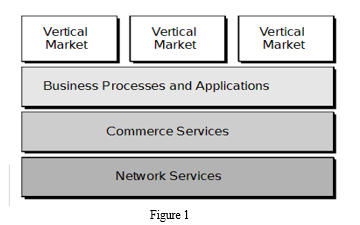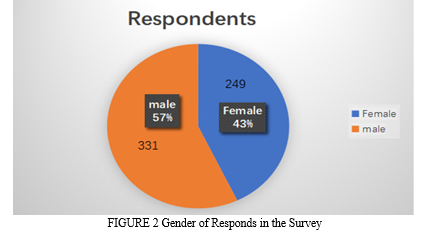Ijraset Journal For Research in Applied Science and Engineering Technology
- Home / Ijraset
- On This Page
- Abstract
- Introduction
- Conclusion
- References
- Copyright
Digital Emporium
Authors: Achal V. Patel
DOI Link: https://doi.org/10.22214/ijraset.2024.59020
Certificate: View Certificate
Abstract
E-commerce, an integral facet of modern business, facilitates the buying and selling of goods and services over electronic networks, particularly the internet. This paradigm shift in commerce has transformed traditional business models, witnessing remarkable global growth. In India, e-commerce has flourished with the proliferation of internet usage, especially among startups embracing it as a distinctive business model. Despite its widespread adoption, e-commerce remains underexplored. This research endeavors to delineate the e-commerce landscape, analyzing trends and key variables pivotal for success. Additionally, the study examines user preferences and purchasing behaviors across various e-commerce platforms, including JD, Taobao, Pinduoduo, and Tmall, aiming to enhance marketing efficiency through understanding consumer tendencies and motivations. Through empirical analysis and feedback collection, the study elucidates the diverse preferences of consumers across different platforms, shedding light on factors influencing platform choice, such as product category, age, and gender. Ultimately, this research seeks to contribute to a deeper understanding of e-commerce dynamics and its implications for businesses and consumers alike.
Introduction
I. INTRODUCTION
In the past two decades, there has been a profound transformation in the way individuals conduct their daily lives, largely attributed to advancements in technology and the advent of the internet. According to Hoffman, Novak, and Chatterjee's "A New Marketing Paradigm for Electronic Commerce," a fundamental lack of trust between online stores and consumers has historically hindered widespread adoption of online shopping and data sharing [2]. However, with the increasing transparency of online pricing and the ease of use associated with online shopping platforms, coupled with the widespread availability of smartphones, consumers now have the ability to conveniently purchase a wide array of products from the comfort of their homes.
Despite these advancements, user retention, commonly referred to as "user stickiness," remains a critical factor for e-commerce companies. The continuous refinement of user experience and engagement strategies is an ongoing process, with ample room for improvement. Companies are diligently striving to expand their user base and refine their marketing approaches to avoid limiting themselves to specific consumer segments or product categories. Consumer behavior in the e-commerce landscape is inherently dynamic and multifaceted.
In this paper, we aim to address the complexities of consumer behavior within the e-commerce domain by conducting a comprehensive evaluation of various e-commerce platforms. By randomly selecting and soliciting feedback from diverse consumer segments, we seek to provide valuable insights to companies for effective marketing strategies. As highlighted by Christine Moorman and Linda L. Rice in 2013, policy decisions hinge upon assumptions regarding the interactions among consumer segments [3]. It is imperative for companies to be cognizant of consumer feedback across different platforms and adapt their strategies accordingly. Furthermore, Zhong Xiaona's research underscores the importance of understanding the factors influencing consumer cognition and behavior in the context of online shopping [4]. By delving into various perspectives, we aim to uncover the underlying determinants of consumer decision-making processes.
Overall, this research endeavors to shed light on the intricate dynamics of consumer behavior in the e-commerce realm, providing actionable insights for companies to enhance their market positioning and foster sustained growth in an increasingly competitive landscape.
II. REFERENCE MODEL
The Digital Emporium Framework is a cutting-edge architectural model designed for e-commerce platforms, prioritizing interoperability and reusability of applications and services. Inspired by established frameworks such as the eCo System, it facilitates seamless communication and collaboration among various components. Emphasizing de facto interoperability over strict standards adherence, the framework enables products to communicate seamlessly, adapting to rapid technological advancements. Comprising several layers, including Vertical Markets, Business Processes and Applications, Commerce Services, and Network Services, it provides a cohesive structure for e-commerce operations. A key aspect is the adoption of a Common Business Language (CBL) to standardize communication protocols and streamline interactions within the digital ecosystem. Middleware components, known as platform APIs, transform standalone applications into interoperable services accessible through standard network service requests (NSRs). In essence, the Digital Emporium Framework offers a robust architectural model for e-commerce platforms, fostering innovation, efficiency, and adaptability within the digital marketplace. Detailed documentation and further insights on implementation and development are available for reference. Its modular structure and emphasis on reusable components ensure scalability and sustainability, empowering businesses to meet the evolving demands of online commerce effectively.

III. LITERATURE STUDY
In this section, we provide a summary of significant studies concerning Python Django and MySQL that have been published in the literature over the past five years. Table 1 presents an overview of these studies, classified into four primary topics, which we will discuss next:
A. Advantages of Python Django and MySQL
A study emphasized the rapid development capabilities of Python Django for building web applications, particularly its built-in features such as the Django Admin interface, ORM (Object-Relational Mapping), and robust security mechanisms. They showcased examples of successful web applications developed using Django and highlighted its scalability and versatility.
Another research highlighted the seamless integration and performance benefits of using MySQL as the backend database with Python Django web applications. They conducted experiments to demonstrate MySQL's reliability, data integrity features, and scalability in handling large datasets, particularly in e-commerce and content management systems.
B. Comparison of Python Django with Other Web Frameworks
A comparative analysis evaluated the performance and ease of development of Python Django against
other popular web frameworks such as Flask, Ruby on Rails, and Laravel. They assessed factors such as development speed, scalability, community support, and ecosystem maturity, concluding that Python Django offers a balanced approach suitable for a wide range of web development projects.
C. Limitations of Python Django and MySQL
A study highlighted certain limitations of Python Django, such as its monolithic architecture, which may lead to performance bottlenecks in large-scale applications. They discussed strategies for mitigating these limitations, including optimizing database queries and employing caching mechanisms.
In terms of MySQL, a paper discussed potential security vulnerabilities associated with misconfigurations and inadequate access controls, which could compromise sensitive data stored in MySQL databases. They emphasized the importance of implementing security best practices and regularly updating MySQL configurations to mitigate risks.
D. Best Practices and Optimization Techniques for Python Django and MySQL
A comprehensive guide outlined best practices for optimizing Python Django applications, including techniques for improving performance, scalability, and code maintainability. They discussed strategies for optimizing database queries, caching frequently accessed data, and leveraging asynchronous programming paradigms for handling concurrent requests efficiently.
In the context of MySQL, a study explored optimization techniques for improving database performance, such as indexing strategies, query optimization, and database schema design principles. They provided practical examples and recommendations for optimizing MySQL configurations to achieve optimal performance in various use cases.
These studies collectively provide valuable insights into the advantages, limitations, and optimization strategies associated with Python Django and MySQL, aiding developers and researchers in making informed decisions when building and maintaining web applications.
IV. SUMMARY OF RESEARCH TRENDS
The survey data, depicted in Figure 2, reveals a gender distribution among respondents, with 249 women and 331 men participating, accounting for 43% and 57% of the sample respectively. This gender breakdown offers valuable insights into the demographic composition of the study, indicating potential variations in consumer behavior or platform usage patterns based on gender.
The prominence of male participants, comprising a majority of the respondents, suggests a potential gender disparity in consumer preferences or engagement with e-commerce platforms. Without additional information from other figures, it's challenging to draw comprehensive conclusions regarding consumer preferences and their intersection with gender and age demographics.
Future research could explore the implications of gender imbalances on consumer preferences and engagement with e-commerce platforms in greater depth. Analyzing attitudes and behaviors across different demographic segments would provide a more nuanced understanding of market dynamics, informing targeted strategies to enhance user satisfaction and platform performance.

V. ACKNOWLEDGMENT
I extend sincere gratitude to Mr. Akash for his invaluable guidance and support as our project supervisor. His mentorship has been instrumental in shaping our project's trajectory and guiding us through its various stages. Additionally, we express our appreciation to Mr. Vijay Prajapati for his mentorship and support as our internship mentor. His expertise and insights have significantly contributed to our learning and professional development.
Furthermore, I extend thanks to all team members for their dedication and collaborative efforts in bringing this project to fruition. Each member's contribution has been invaluable, and I am grateful for the opportunity to work alongside such talented individuals. Additionally, I acknowledge the support of HN Techno. for providing the necessary resources and support for the project's execution. Lastly, I extend gratitude to all who have supported and encouraged me throughout this endeavor. Your encouragement has been a source of motivation, and I am truly thankful for your unwavering support.
Conclusion
In concluding the project, it is evident that a nuanced understanding of consumer behavior is paramount for the success of the digital emporium. The analysis reveals distinct preferences among different user groups, with female users prioritizing product variety and quality, while male consumers, particularly those aged 18-50, emphasize product quality, after-sales support, and cost-effectiveness. This insight underscores the importance of tailoring product offerings and marketing strategies to cater to the diverse needs and preferences of the target audience. Furthermore, addressing common consumer grievances regarding software design in online shopping platforms emerges as a critical area for improvement. By prioritizing user experience and implementing intuitive interface design and navigation, the digital emporium can enhance customer satisfaction and engagement. This approach aligns with the project\'s goal of creating a seamless and enjoyable online shopping experience for users across different demographic segments. Moving forward, the project should adopt a data-driven approach, continuously analyzing consumer preferences and market trends to inform strategic decision-making. By remaining agile and responsive to evolving user needs, the digital emporium can stay ahead of the competition and establish itself as a trusted destination for online shopping. Through ongoing optimization of product offerings, customer service, and platform design, the project can build long-term customer loyalty and drive sustained growth in the competitive e-commerce landscape.
References
[1] Mingzhen Zhang, Research on Interface Design of Smartphone Application Based on User Experience [D], Jiangnan University, 2011 [2] Le Shen, Research on E-commerce Website Design Based on User Experience——Taking Online Digital Printing as an Example[D], East China University of Science and Technology, 2013 [3] Jesse James Garrett, Elements of User Experience, Mechanical Industry Press, [D], 2011:52-56 [4] Talking about the elements of user experience: An interview with Jesse James Garrett.2006.http://webword.com/interviews/king.html. [5] iimedia.cn. China online shopping market development scale and user behavior analysis in 2019. Available, https://www.iimedia.cn/c1020/66739.html
Copyright
Copyright © 2024 Achal V. Patel. This is an open access article distributed under the Creative Commons Attribution License, which permits unrestricted use, distribution, and reproduction in any medium, provided the original work is properly cited.

Download Paper
Paper Id : IJRASET59020
Publish Date : 2024-03-14
ISSN : 2321-9653
Publisher Name : IJRASET
DOI Link : Click Here
 Submit Paper Online
Submit Paper Online

